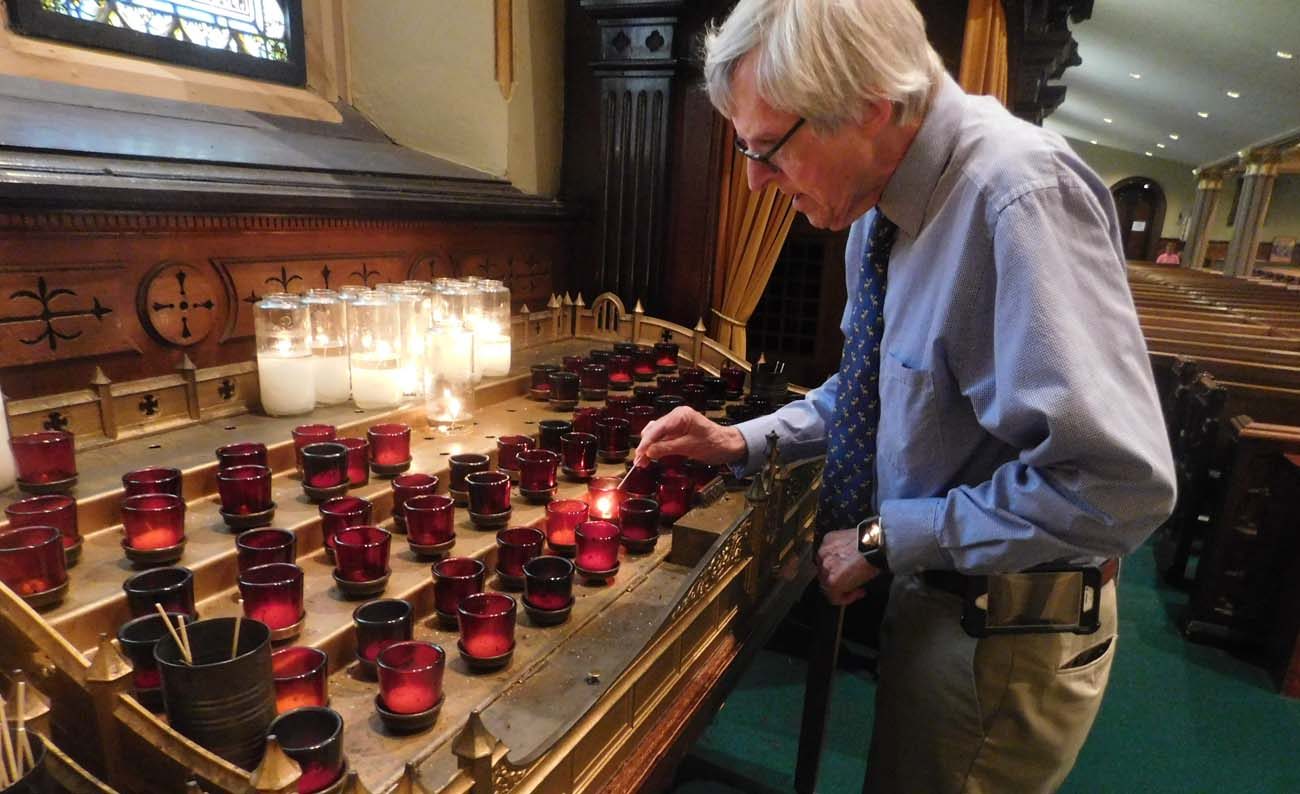

Articles
Why Catholics Light Candles
Modified: March 6, 2024
Discover the significance of candle lighting in Catholicism with our informative articles. Learn about the traditions and beliefs behind this sacred practice.
(Many of the links in this article redirect to a specific reviewed product. Your purchase of these products through affiliate links helps to generate commission for Storables.com, at no extra cost. Learn more)
Introduction
In the rich tapestry of Catholic rituals and traditions, the act of lighting candles holds a special place. For centuries, lighting candles has been an integral part of Catholic worship, symbolizing spiritual devotion, prayer, and commemoration. The flickering flame of a candle has the power to create a serene and sacred atmosphere, drawing the faithful closer to the divine presence.
Lighting candles in Catholicism is not merely a mundane task, but a meaningful act that carries deep religious significance. It is a practice that transcends time and connects the faithful to the ancient traditions of their faith. Understanding the historical, symbolic, and spiritual aspects of lighting candles in the Catholic tradition can shed light on the profound role it plays in the lives of believers.
Key Takeaways:
- Lighting candles in the Catholic tradition symbolizes devotion, prayer, and remembrance, connecting believers to the historical roots of their faith and fostering a sense of unity and communion with God and one another.
- Candles play a multifaceted role in creating a sacred atmosphere in Catholic churches, symbolizing the presence of Christ, offering prayers and intentions, and serving as a form of devotion and sacrifice.
Read more: Why Do We Light Candles For The Dead
Historical Significance of Lighting Candles in Catholicism
The tradition of lighting candles in Catholicism can be traced back to early Christianity. During the time of the Roman Empire, Christians faced persecution and were forced to worship in secret. They would gather in catacombs, underground burial sites, to practice their faith. These dark and often dangerous spaces were illuminated by candles, which served as a symbol of hope and provided much-needed light for worship.
As Christianity grew and gained official recognition, the practice of lighting candles became more organized and prominent in the Church. With the conversion of Constantine the Great to Christianity in the 4th century, churches were built, and the use of candles became more prevalent in religious ceremonies and liturgical celebrations.
Throughout the Middle Ages, candles played a crucial role in Catholic worship. The availability of beeswax, which produced a cleaner and more fragrant flame, increased the importance and use of candles in churches. Candlelight was seen as a representation of divine light, symbolizing the presence of Christ, who is often referred to as the “Light of the World.”
Candles were also used during times of plague and epidemics as a way to purify the air and ward off evil spirits. The belief in the power of candles to drive away darkness and bring about healing and protection became deeply ingrained in Catholic tradition.
Today, the tradition of lighting candles in Catholicism continues to be a cornerstone of worship and devotion. Whether it is the lighting of votive candles in a church or the use of candles in personal prayer, the act carries with it a deep connection to the historical roots of the faith.
Symbolism and Meaning of Candle Lighting in Catholic Rituals
In Catholic rituals and liturgical celebrations, the act of lighting candles carries profound symbolism and meaning. The flame of a candle represents the presence of Christ, the Light of the World, and serves as a visual reminder of His divine presence among the faithful.
One of the primary symbols associated with candle lighting is that of illumination. Just as a candle illuminates a dark room, the light of the candle symbolizes the divine light that dispels darkness and brings forth spiritual enlightenment. It represents the knowledge and truth that Christ brings, guiding the faithful on their spiritual journey.
Candles also symbolize prayer. The act of lighting a candle is often accompanied by a prayer, whether it is a specific prayer or a personal communication with God. The flickering flame represents the prayers of the faithful rising up to heaven, a tangible representation of their hopes, needs, and desires.
In Catholic rituals, different colored candles are often used to represent specific intentions or themes. For example, a white candle is often used to symbolize purity or to honor the Blessed Virgin Mary. Red candles may be used during times of martyrdom or to symbolize the presence of the Holy Spirit. The symbolic use of colors adds depth and richness to the act of lighting candles in worship.
Candle lighting also signifies remembrance and commemoration. In Catholic tradition, candles are often lit in memory of departed loved ones, or as a way to honor the saints and martyrs of the faith. The act of lighting a candle for someone serves as a visible symbol of their continued presence and a way to offer prayers for their souls.
Furthermore, candles are used during sacramental rituals in the Catholic Church, such as baptisms, weddings, and funerals. The lighting of candles during these ceremonies represents the sacredness and significance of these moments in the lives of the faithful.
In essence, the symbolism and meaning of candle lighting in Catholic rituals encompass spiritual enlightenment, prayer, remembrance, and the presence of Christ. It is a powerful and tangible expression of faith, connecting the faithful to the divine and fostering a sense of unity and communion with God and one another.
Connection to Prayer and Devotion in Catholic Tradition
In the Catholic tradition, the act of lighting candles is intimately connected to prayer and devotion. It is a visible and tangible way for the faithful to express their personal and communal relationship with God.
Candle lighting is often associated with quiet reflection and personal prayer. In churches and chapels, individuals will light candles and spend a few moments in silent contemplation, offering their intentions and petitions to God. This simple act of lighting a candle becomes a sacred ritual, allowing individuals to enter into a deeper state of prayer and communion with God.
Furthermore, lighting candles in the presence of the Blessed Sacrament, such as during Eucharistic Adoration, creates a reverent and contemplative atmosphere. The flickering candles serve as a gentle reminder of Christ’s real presence in the Eucharist, inviting the faithful to enter into a profound and intimate encounter with Him.
Candle lighting is also an important aspect of devotional practices within Catholicism. Many Catholic devotions, such as the Rosary or Novenas, involve the lighting of candles as part of the prayer ritual. These candles serve as symbols of reverence and devotion, creating a sacred space for the faithful to engage in their spiritual practices.
Additionally, the lighting of candles in front of statues or images of saints is a common practice in Catholicism. This act represents a devotion to the intercession and guidance of the saints in the spiritual journey of the faithful. Lighting candles before these images serves as a way to honor the saints and seek their intercession for specific needs or intentions.
The connection between candle lighting and prayer in Catholic tradition extends beyond individual acts of devotion. During liturgical celebrations, candles play a pivotal role in enhancing the sacredness of the Mass. They are lit on the altar, symbolizing Christ’s presence and acting as a reminder of His sacrifice on the cross.
Moreover, candles are lit during the sacraments of Baptism and Confirmation, signifying the entrance into the life of faith and the reception of the Holy Spirit. The lighting of candles represents the illumination and transformation that occur through these sacraments.
Overall, the act of lighting candles in the context of prayer and devotion is deeply ingrained in the Catholic tradition. It serves as a means of expressing reverence, seeking intercession, and fostering a deeper connection with God and the communion of saints.
Role of Candles in Sacred Spaces and Worship
Candles play a vital role in creating a sacred ambiance and enhancing the worship experience in Catholic churches and sacred spaces. The presence of candles serves to create a visual and symbolic representation of the divine presence and the sacredness of the space.
One of the primary functions of candles in sacred spaces is to provide illumination. Historically, before the advent of electricity, the soft glow of candles was the primary source of light in churches. This warm and flickering light creates an atmosphere conducive to prayer, meditation, and contemplation.
Candles are often strategically placed around the altar, emphasizing its central place in Catholic worship. The candles on the altar symbolize the Light of Christ, reminding the faithful of His presence as the focal point of their worship and devotion.
The altar candles are typically lit during Mass and other liturgical celebrations, symbolizing the presence of Christ and His sacrifice. The act of lighting these candles serves as a visible reminder of the sacredness of the moment and the transcendence of God’s presence among the faithful.
In addition to altar candles, votive candles are an integral part of Catholic worship. These small candles, often placed in stands or racks, allow the faithful to light candles as an offering or expression of their prayers and intentions.
When individuals light a votive candle, they participate in a communal act of devotion. The flickering flames of the many candles create a collective light, representing the unity of the faithful and their shared commitment to prayer and worship.
Candles also have ceremonial roles in sacramental liturgies. For example, during the Sacrament of Matrimony, the bride and groom may each light a unity candle, symbolizing the merging of their lives and the presence of Christ in their union.
Furthermore, in the celebration of the Easter Vigil, the Paschal Candle is prominently featured. This large candle, representing the risen Christ, is lit from the new fire and carried into the darkened church, symbolizing the triumph of light over darkness and the joy of Christ’s resurrection.
The role of candles in sacred spaces and worship goes beyond the visual aspect. The aromatic scent of beeswax or other candle materials enhances the sensory experience in the church, elevating the worship experience and engaging the faithful on a deeper level.
In summary, candles play a multifaceted role in creating a sacred atmosphere in Catholic churches and sacred spaces. From illuminating the space to symbolizing the presence of Christ, from serving as offerings of prayer to enhancing the sensory experience, candles are an integral part of the worship environment, heightening the spiritual connection between the faithful and the divine.
Catholics light candles as a symbol of their prayers and intentions. The light represents Christ as the “light of the world” and the prayers offered are seen as a form of communication with God.
Read more: Why Do People Light Candles In Church
The Practice of Lighting Candles for Specific Intentions
In the Catholic tradition, the act of lighting candles is often accompanied by specific intentions and prayers. The practice of lighting candles for specific purposes has deep roots in the faith and is a way for the faithful to express their needs, hopes, and desires to God.
When lighting candles for specific intentions, individuals often choose a particular candle color that corresponds to their intention. For example, a red candle may be lit for strength and courage, a green candle for healing, or a blue candle for peace and tranquility. This symbolic use of color adds an additional layer of meaning and intention to the act of lighting candles.
The lighting of votive candles in churches is a common practice for specific intentions. Individuals light candles and offer prayers for various reasons, such as the healing of a loved one, guidance in making important decisions, or seeking comfort during challenging times. The flickering flames serve as a visible representation of these prayers, rising up to heaven as an offering.
Some churches have dedicated candle stands or shrines where the faithful can light candles and write their intentions on slips of paper, which are then placed near the candles. This practice allows individuals to focus their thoughts and intentions while offering their prayers to God.
Lighting candles for specific intentions is not limited to churches alone. Many individuals also light candles in their homes, creating a personal sacred space for prayer and reflection.
Another aspect of lighting candles for specific intentions is the use of prayer cards or vigil lamps. Prayer cards contain specific prayers or devotions associated with the intention, and individuals may light a candle while reciting these prayers. Vigil lamps, which are larger and burn continuously, are also used for persistent intentions or when individuals are unable to physically be present to tend to a candle.
It is important to note that the act of lighting candles for specific intentions is not a superstitious practice, but rather a tangible expression of faith and trust in God’s providence. It is a way for the faithful to actively engage in their relationship with God, entrusting their needs and concerns to Him through prayer.
Overall, the practice of lighting candles for specific intentions is deeply intertwined with the Catholic tradition of prayer and devotion. It allows individuals to bring their heartfelt intentions before God, seeking His guidance, comfort, and intervention in their lives.
Lighting Candles in Commemoration of Saints and Loved Ones
One of the significant practices of lighting candles in the Catholic tradition is to commemorate saints and loved ones. It is a way for the faithful to honor and remember those who have gone before us, whether they be canonized saints or beloved family members and friends.
When it comes to saints, candles are often lit in front of their statues or images as a sign of reverence and devotion. The act of lighting a candle in their honor is a way to express gratitude for their intercession and to seek their continued guidance and protection.
Catholics believe that saints, who have lived lives of exceptional holiness on earth, are now in the presence of God and have a special closeness to Him. Lighting candles in their memory is a way to acknowledge their heavenly status and ask for their heavenly assistance.
Similarly, lighting candles in remembrance of loved ones who have passed away is a common practice. It serves as a tangible expression of love, respect, and continued connection with those who are no longer physically present.
These commemorative candles are often lit during special occasions, such as All Saints’ Day or All Souls’ Day, or on the anniversary of a loved one’s death. By lighting a candle in their memory, the faithful honor their legacy and seek comfort in the belief that their loved ones are now in the embrace of God.
Lighting candles in commemoration of saints and loved ones also fosters a sense of unity and communion within the Catholic community. As others see the candles burning, they are reminded to join in prayer and solidarity, creating a collective remembrance and intercession for those being honored.
This act of remembrance extends beyond the physical lighting of candles. In some churches, there are designated areas where the names of deceased loved ones can be written and displayed near a candle. This allows the faithful to offer specific prayers and intentions for their departed family members and friends.
Overall, the practice of lighting candles in commemoration of saints and loved ones is a deeply heartfelt and meaningful tradition in the Catholic faith. It is a way to keep the memories and legacies of those who have gone before us alive and to seek their heavenly intercession and blessing.
The Role of Light and Illumination in Catholic Spirituality
In Catholic spirituality, light and illumination hold significant symbolic value. Light represents the presence of God, the truth, and spiritual enlightenment. The use of candles and the symbolism of light play a central role in deepening the spiritual experience and fostering a closer connection with the divine.
Light is often associated with the presence of Christ, who is referred to as the “Light of the World” in the Scriptures. The flickering flame of a candle represents the divine light that dispels darkness and guides the faithful on their spiritual journey.
In Catholic churches, the lighting of candles creates a sacred ambiance and serves as a metaphorical representation of Christ’s presence among the faithful. The warm and gentle glow of candlelight serves to focus the mind, calm the senses, and create an atmosphere conducive to prayer and contemplation.
Furthermore, the lighting of candles during liturgical celebrations symbolizes the illumination of Christ in the lives of the faithful. The candles on the altar represent His presence and sacrifice, drawing the worshipper’s attention to the transformative power of His love and grace.
In the Catholic tradition, special emphasis is placed on the role of light during the season of Advent and the celebration of Christmas. The Advent wreath, with its four candles representing hope, faith, joy, and peace, is a visual reminder of the anticipation and preparation for the arrival of Christ, the Light of the World.
During the Easter Vigil, the Paschal Candle is central to the celebration. It represents the risen Christ and is lit from the new fire, symbolizing the triumph of light over darkness, sin, and death. The flame of the Paschal Candle is then shared among the faithful, spreading the light of Christ throughout the church.
From a spiritual standpoint, the symbolism of light and illumination extends beyond the physical realm. Catholics are called to be the light of the world, reflecting the light of Christ to those around them. The light they carry within them is meant to dispel the darkness of sin and ignorance, and to inspire and guide others along the path of righteousness.
Light also holds a significant place in the realm of personal prayer and devotion. Individuals often light candles in their homes as part of their daily spiritual practice, creating a sacred space for prayer and reflection. The sight of a burning candle reminds them of their connection with the divine and serves as a focal point for their prayers and intentions.
In summary, light and illumination have deep spiritual significance in Catholicism. Candles and the symbolism of light draw the faithful closer to the divine presence, guide them on their spiritual journey, and remind them of the transformative power of Christ’s love. It is through the illumination of Christ’s light that believers find solace, hope, and purpose in their Catholic spirituality.
Candle Lighting as a Form of Offering and Sacrifice
In the Catholic tradition, the act of lighting candles holds deeper significance than simply providing light or creating a sacred atmosphere. It is also considered a symbolic act of offering and sacrifice, a way for the faithful to express their devotion, surrender, and dedication to God.
When individuals light candles, they are offering their prayers, intentions, and sacrifices to God. The flame of the candle represents their desire to draw closer to the divine presence and to offer themselves in service and worship.
The very act of lighting a candle requires effort and attention. It involves taking a moment to pause, reflect, and intentionally ignite the flame. This act of preparation and focus signifies the commitment and dedication of the faithful to offer their prayers and sacrifice to God.
In a physical sense, the process of lighting a candle involves the consumption and transformation of the candle’s material, be it wax or oil. As the flame consumes the fuel, it symbolizes the offering of oneself to God, the surrender of personal desires and ambitions, and the willingness to be consumed by God’s grace, love, and will.
Candle lighting as a form of sacrifice is reminiscent of the ancient practice of offering burnt offerings to God in various cultures and religious traditions. In the Catholic faith, the burning flame symbolizes the purification and sanctification of the faithful, as they strive to present themselves as a living sacrifice, holy and pleasing to God.
The act of candle lighting is also closely associated with the offering of prayers and intercessions. When individuals light candles for specific intentions, they are offering their prayers, needs, and desires to God. The flickering flames represent these prayers and intentions, rising up as a fragrant offering before the throne of God.
Moreover, the lighting of candles as a form of offering and sacrifice is not limited to individual acts. In liturgical celebrations, such as the Mass, candles are lit on the altar as an offering to God. These candles, representing the Light of Christ, symbolize the sacrificial nature of the Eucharistic celebration and the self-offering of Christ for the salvation of humanity.
In summary, the act of lighting candles in the Catholic tradition carries profound meaning as a form of offering and sacrifice. It signifies the dedication, surrender, and devotion of the faithful to God. It is a way to present their prayers, intentions, and very lives as a pleasing offering in worship and service to the divine.
Read more: Why Do We Light Candles On Shabbat
Conclusion
The act of lighting candles in the Catholic tradition is far more than a simple ritual or decorative element. It holds a deep spiritual significance, symbolizing devotion, prayer, remembrance, and offering. From the historical context of early Christian worship to the present-day practices in churches and homes, candles have been a source of illumination and a representation of the divine presence.
Throughout history, candles have played a crucial role in Catholic worship, providing light in times of darkness and persecution. They have symbolized hope, faith, and the transformative power of God’s love. The flickering flame has been a steadfast reminder of Christ’s presence as the Light of the World, guiding the faithful on their spiritual journey.
The symbolism and meaning of candle lighting in Catholic rituals deepen the spiritual experience. The act of lighting candles in specific colors or for specific intentions offers a visual and tangible representation of prayers and desires rising to heaven. It fosters a sense of unity among the faithful as they participate in collective acts of devotion.
Lighting candles in commemoration of saints and loved ones allows the faithful to honor their intercession and keep their memories alive. It strengthens the connection between the Church militant on earth and the Church triumphant in heaven, fostering a sense of communion with the saints and the belief in their ongoing presence and intercession.
In Catholic spirituality, light and illumination hold significant symbolism. Candles serve as a metaphorical representation of Christ’s presence and the transformative power of His love and grace. They create a sacred ambiance, invite contemplation, and inspire worshippers to be the light of Christ in the world.
Furthermore, candle lighting is seen as an act of offering and sacrifice. It represents the commitment and dedication of the faithful to surrender themselves to God and to present their prayers, intentions, and very lives as offerings. It is an opportunity for the faithful to engage in personal and communal acts of devotion, seeking God’s presence, guidance, and intercession.
In conclusion, the practice of lighting candles in the Catholic tradition encompasses historical, symbolic, and spiritual significance. It serves as a visual reminder of Christ’s presence, a means of offering prayers and intentions, a way to honor saints and loved ones, and a form of devotion and sacrifice. The flickering flames of candles illuminate not only physical spaces but also the hearts and souls of the faithful, fostering a deep connection with the divine in Catholic spirituality.
Frequently Asked Questions about Why Catholics Light Candles
Was this page helpful?
At Storables.com, we guarantee accurate and reliable information. Our content, validated by Expert Board Contributors, is crafted following stringent Editorial Policies. We're committed to providing you with well-researched, expert-backed insights for all your informational needs.

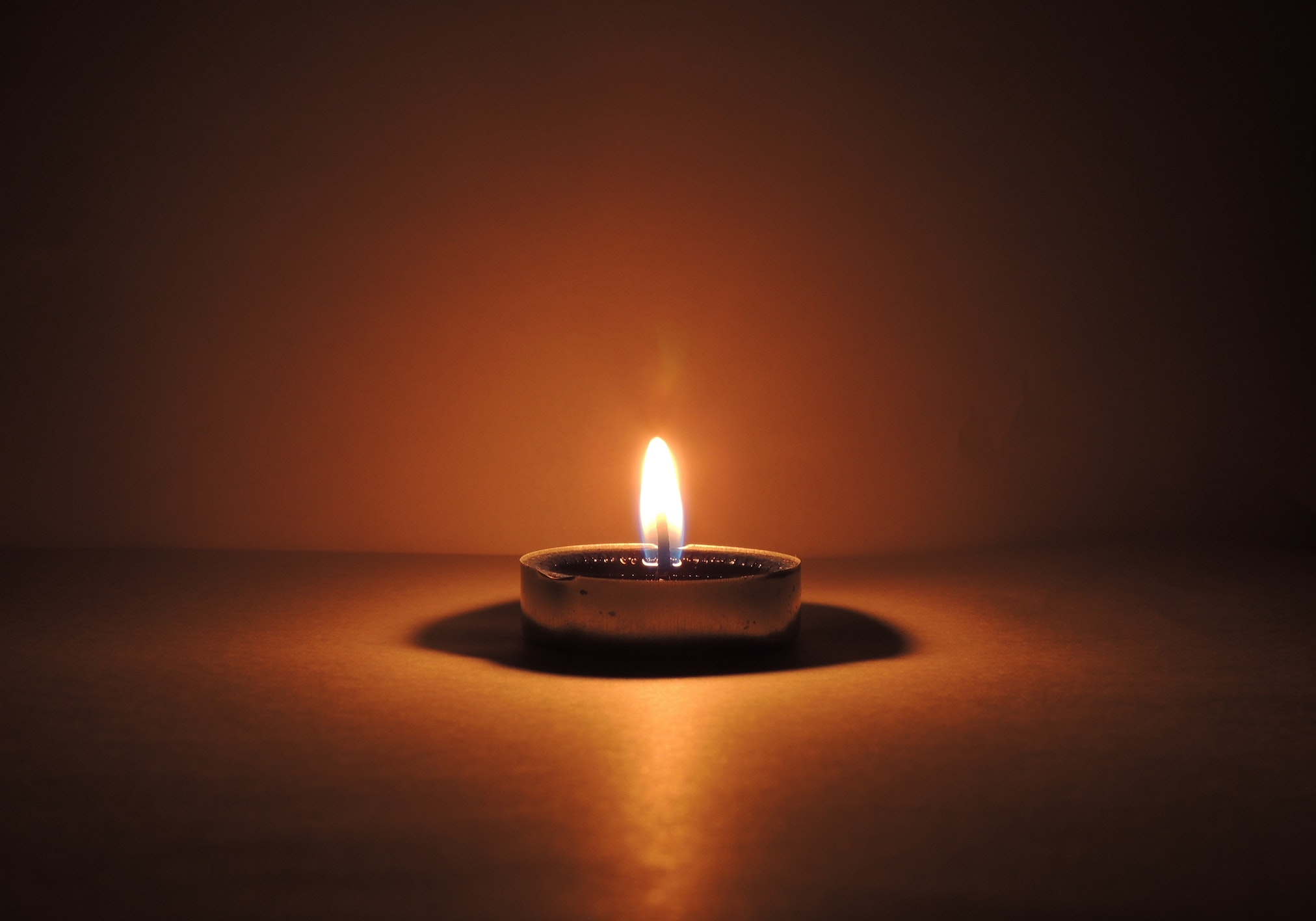

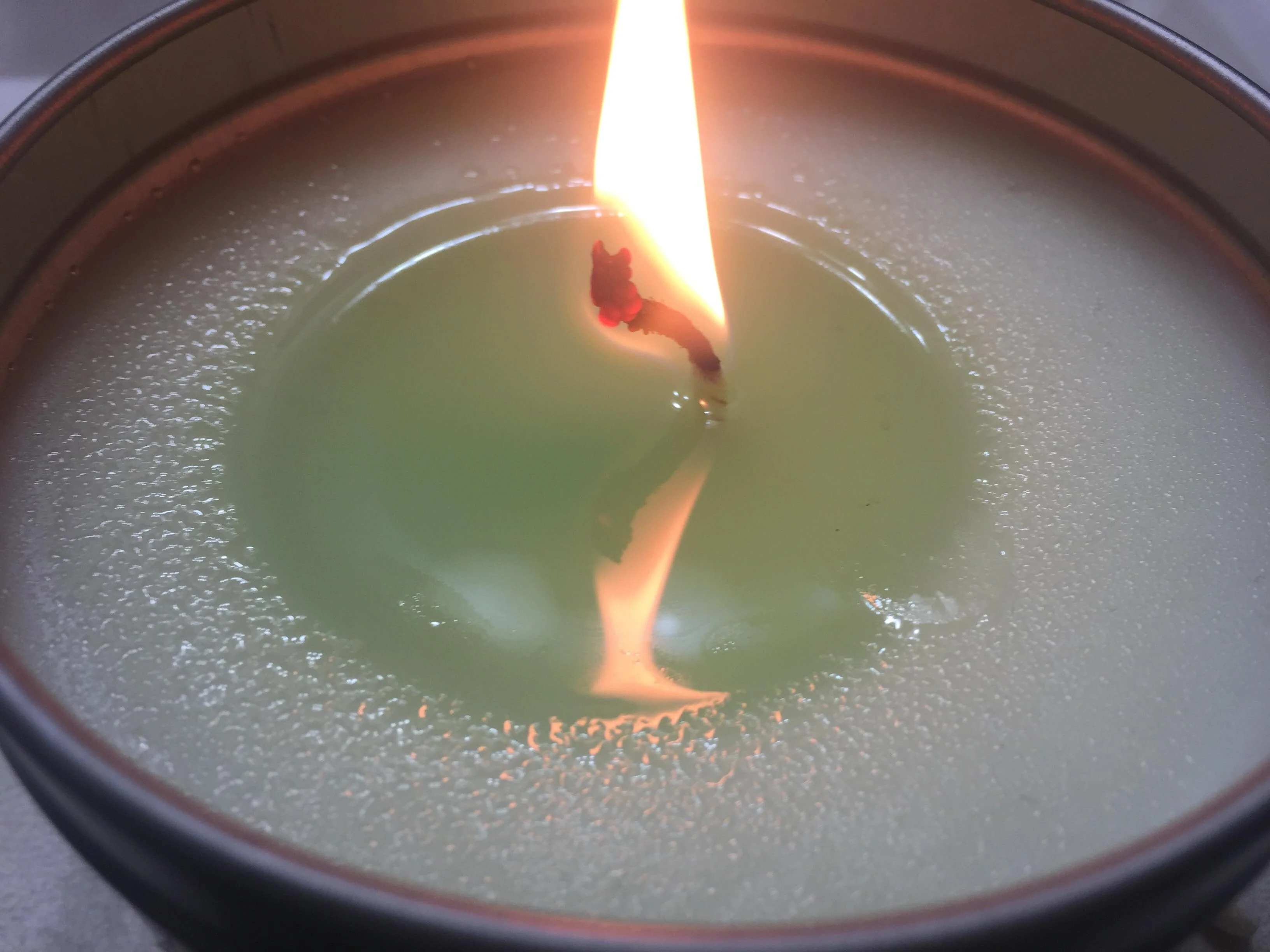


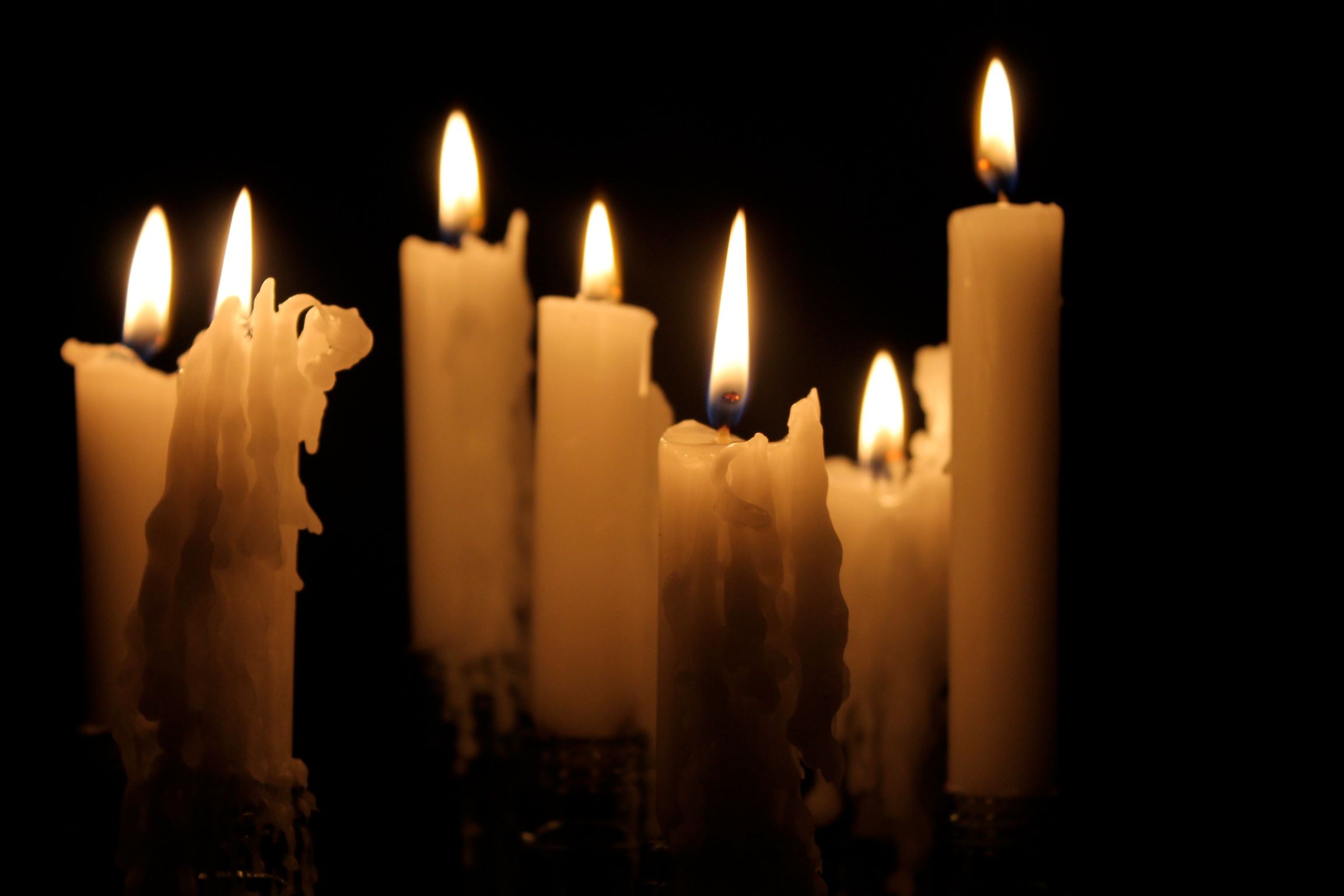


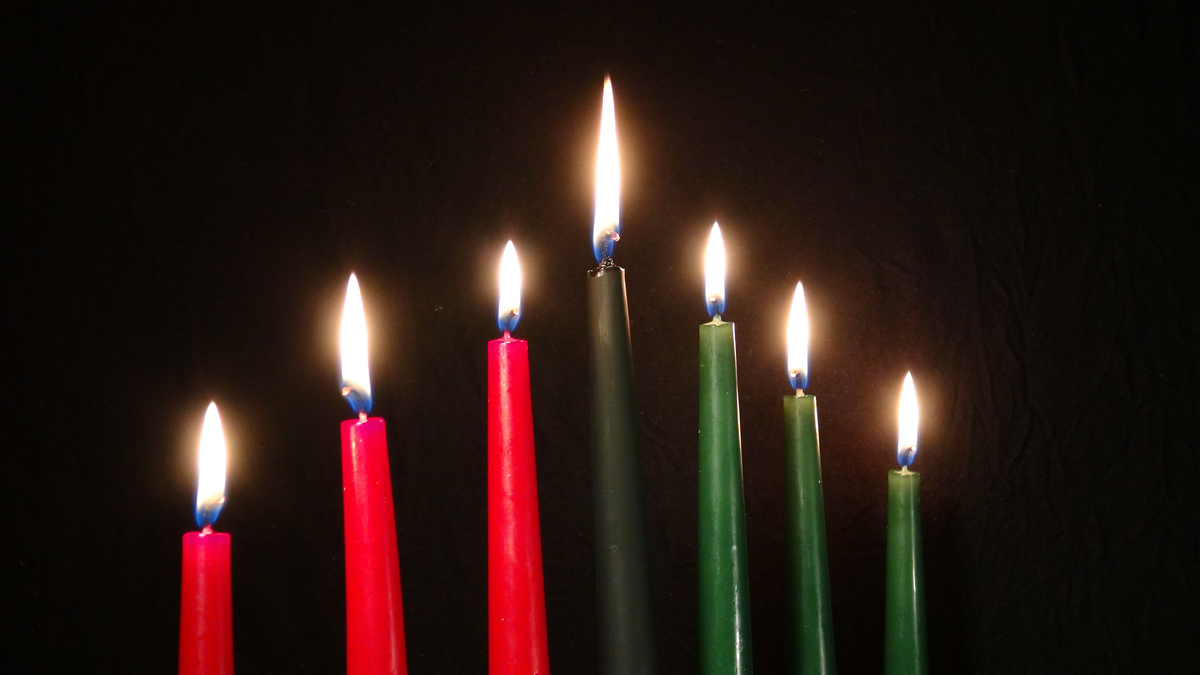
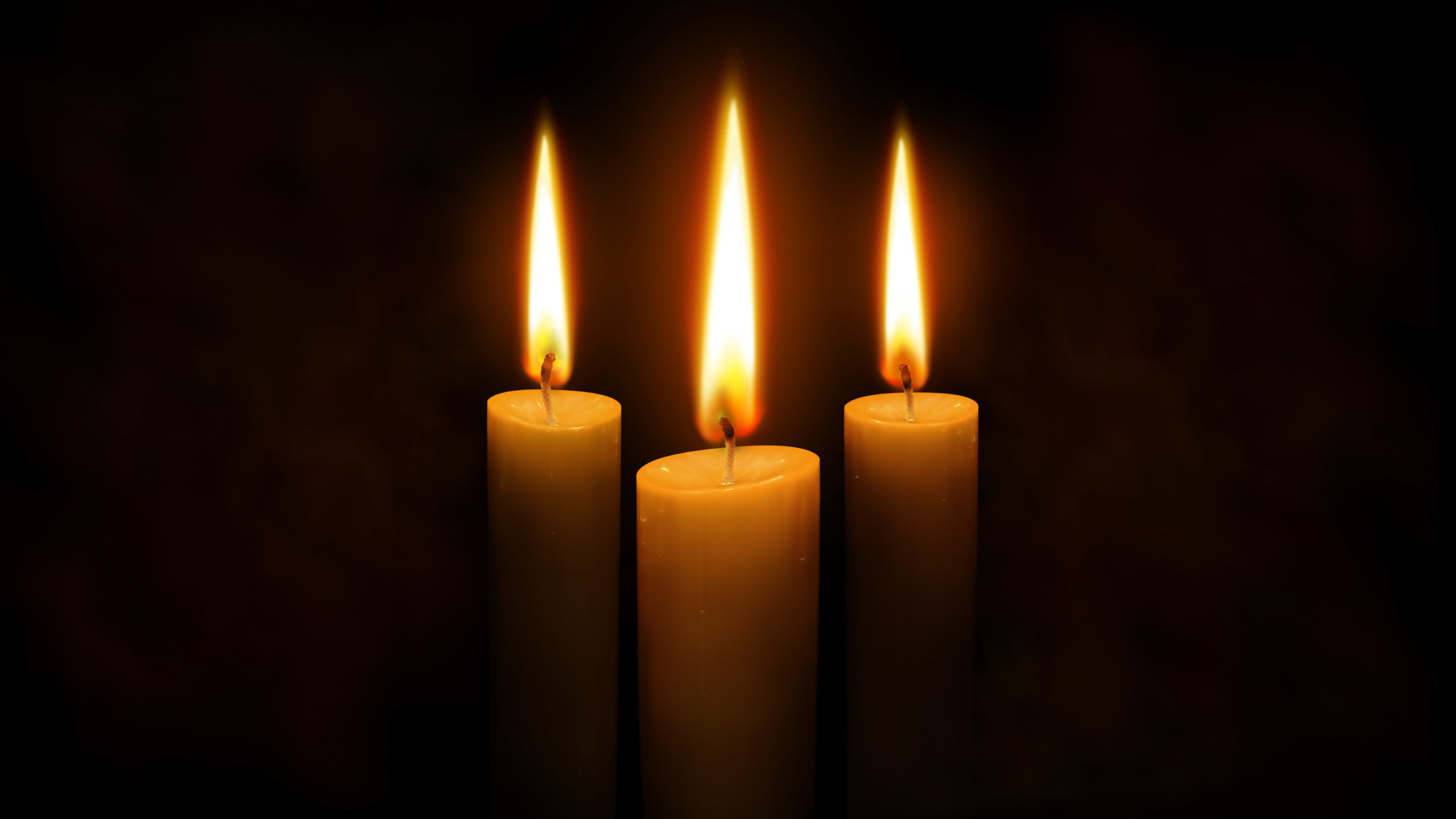



0 thoughts on “Why Catholics Light Candles”